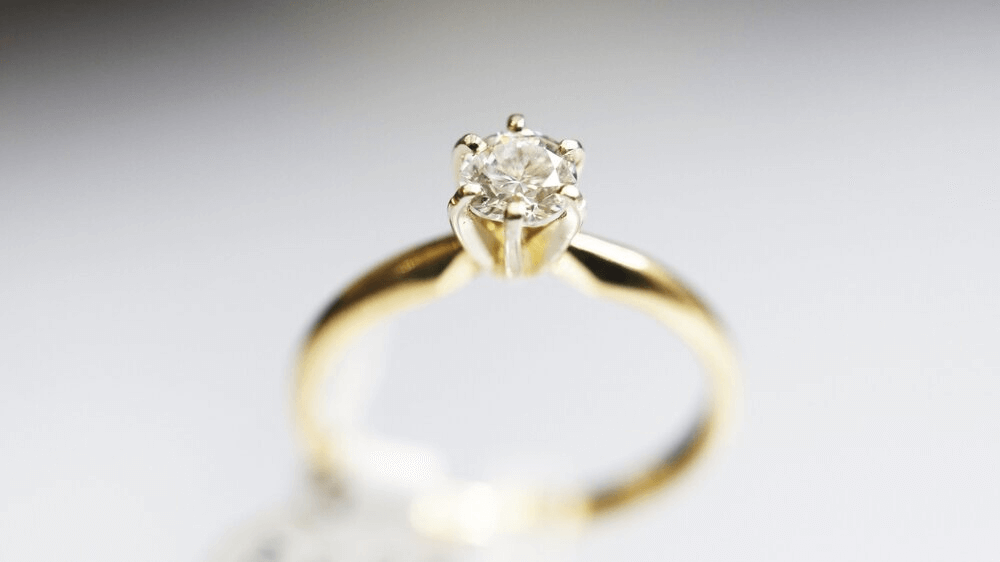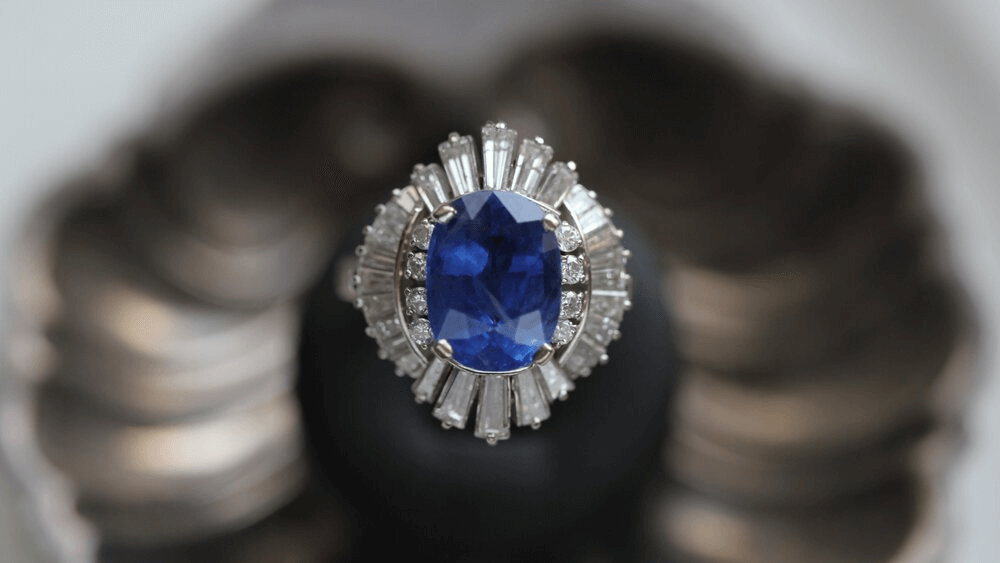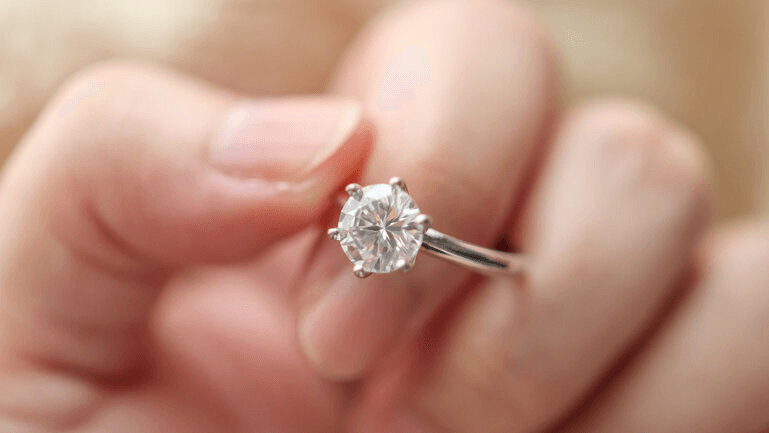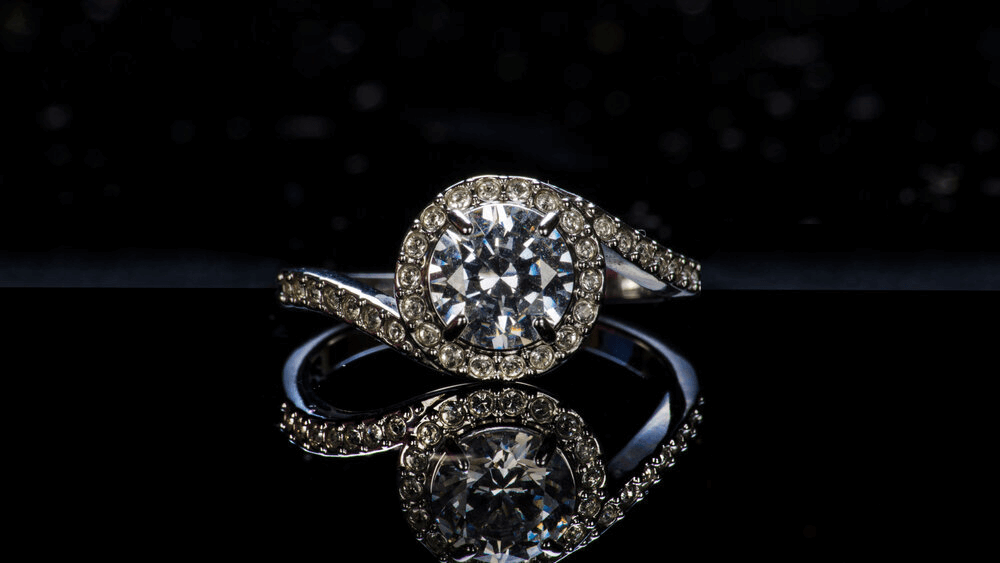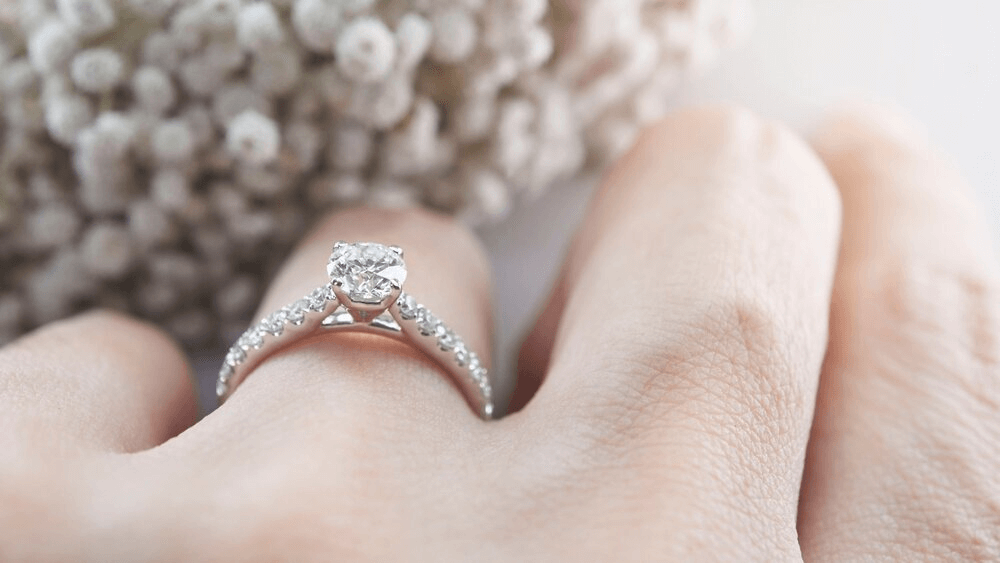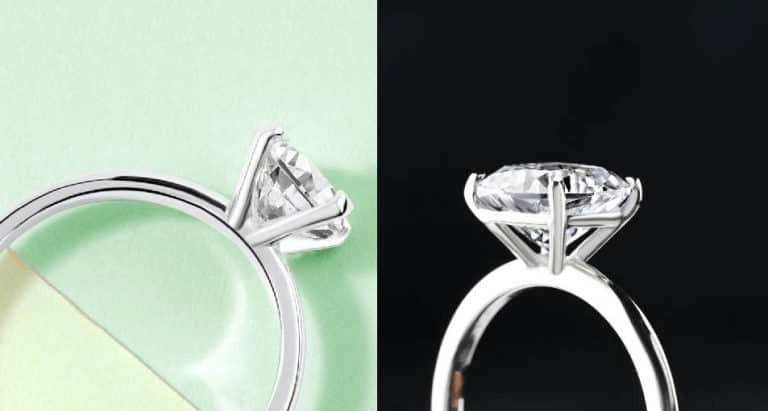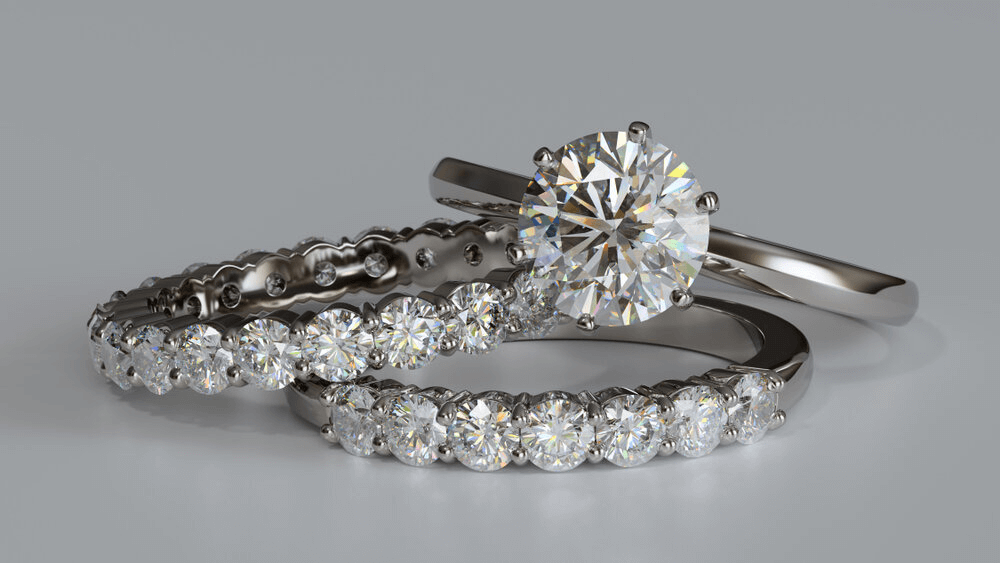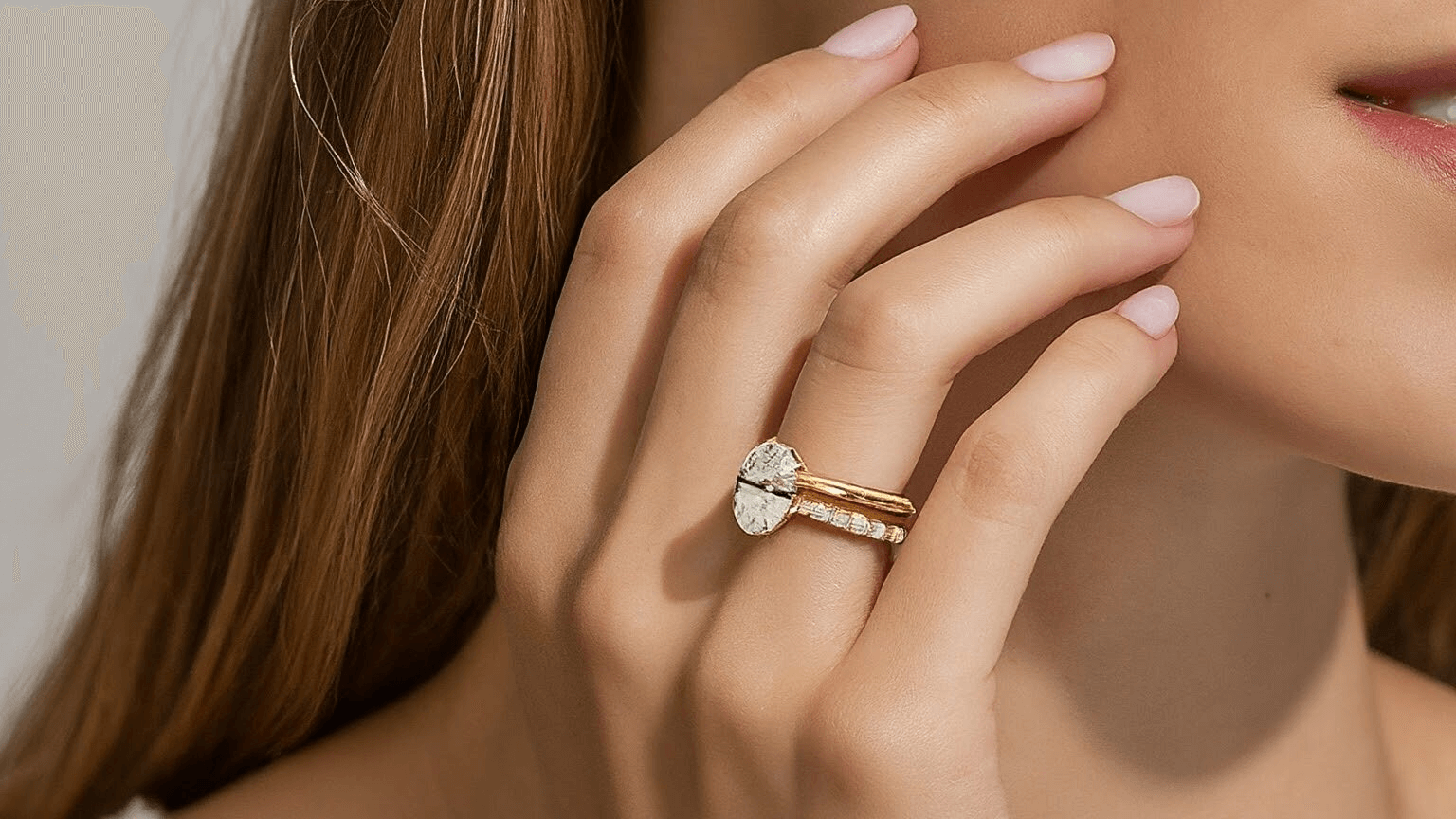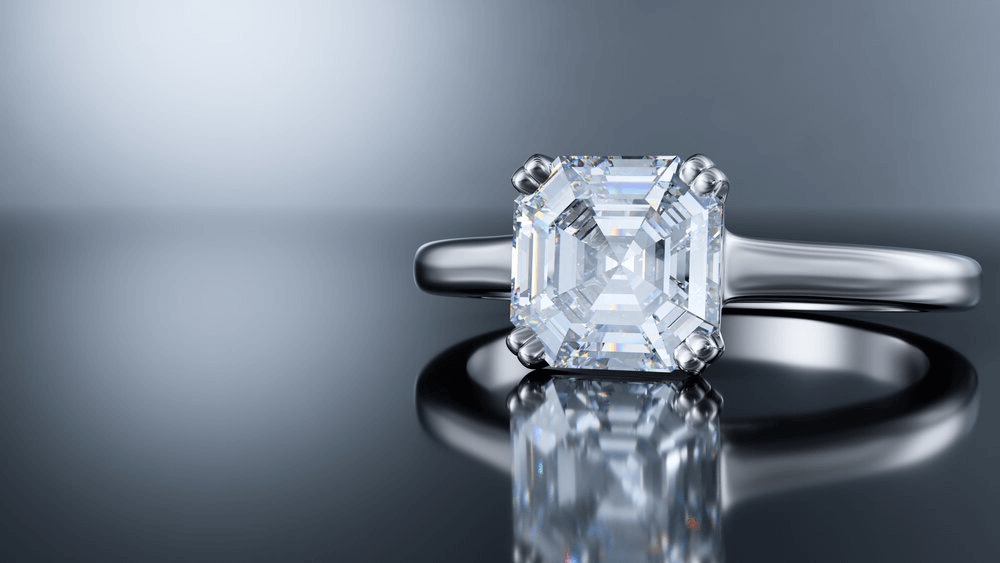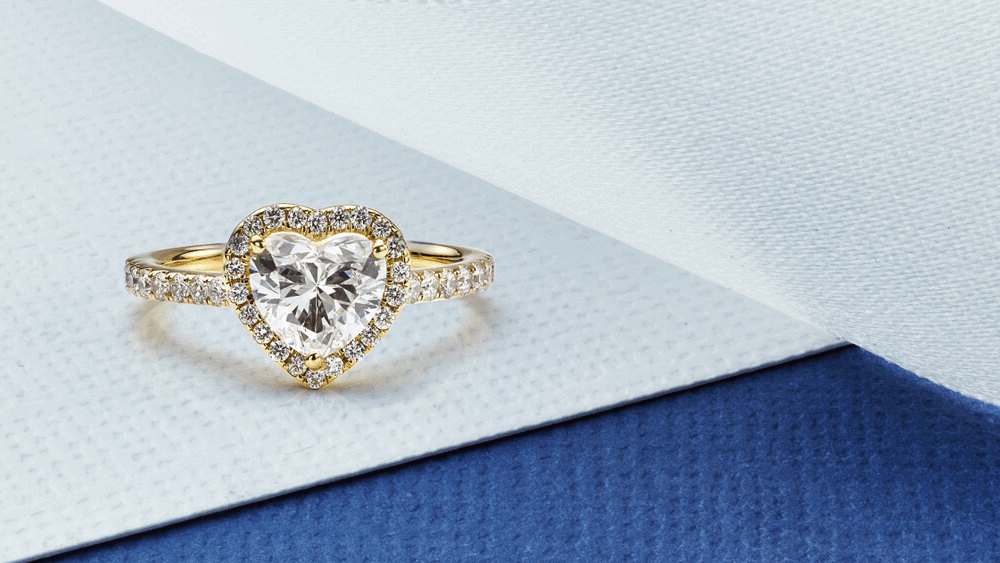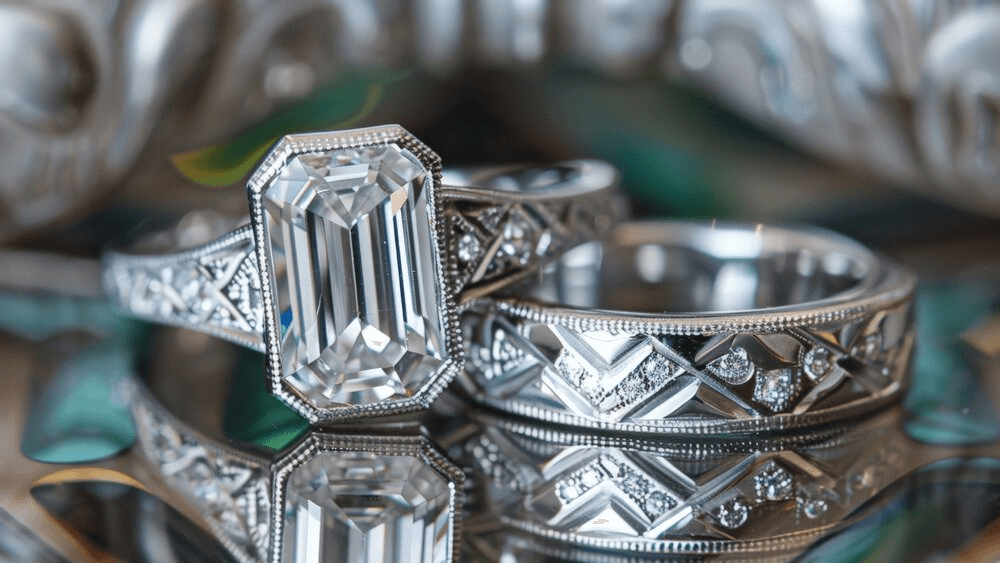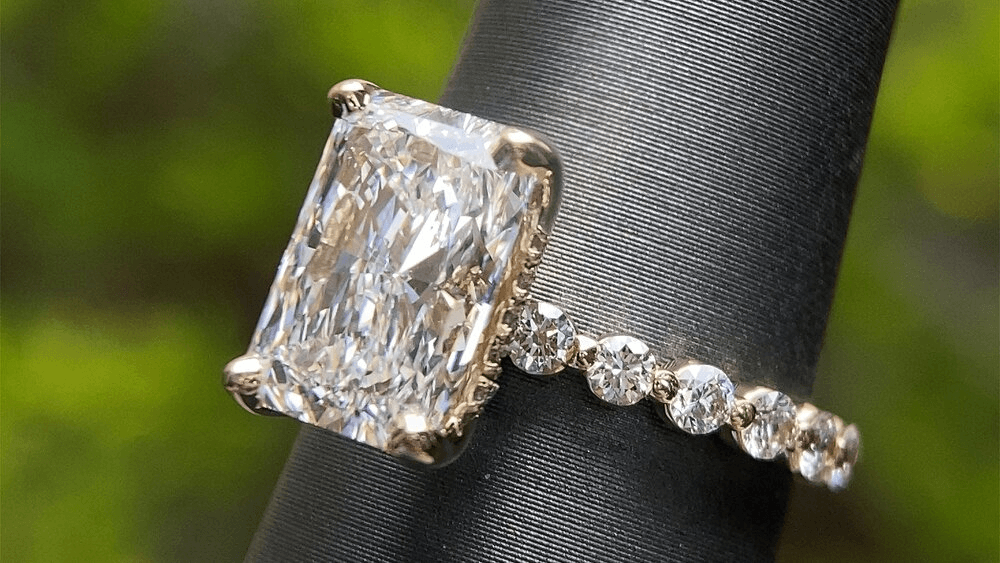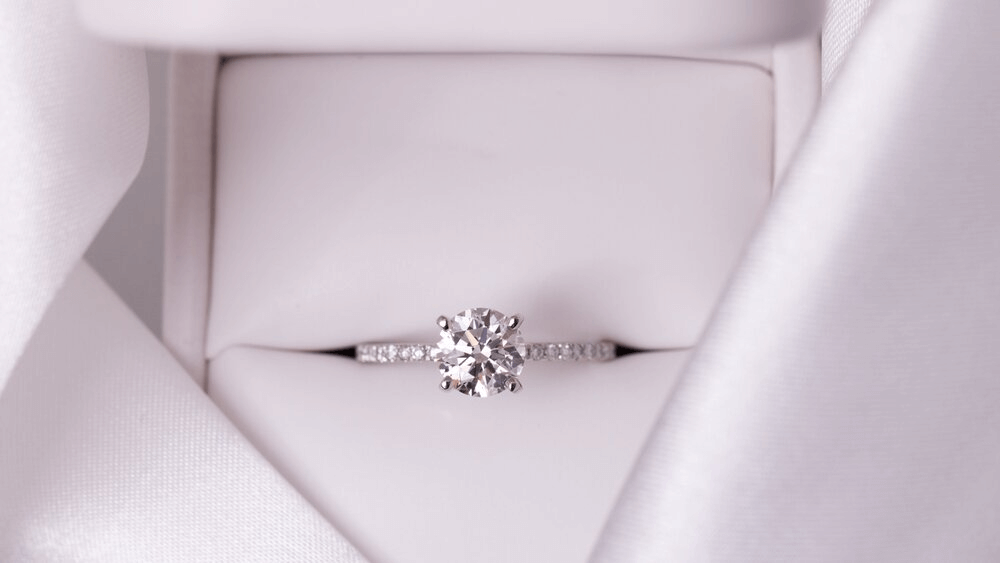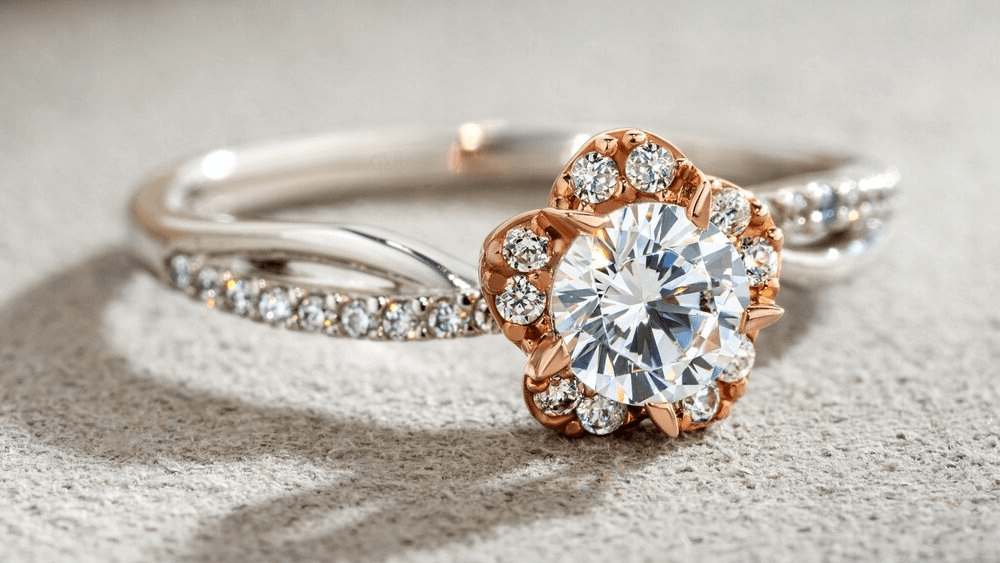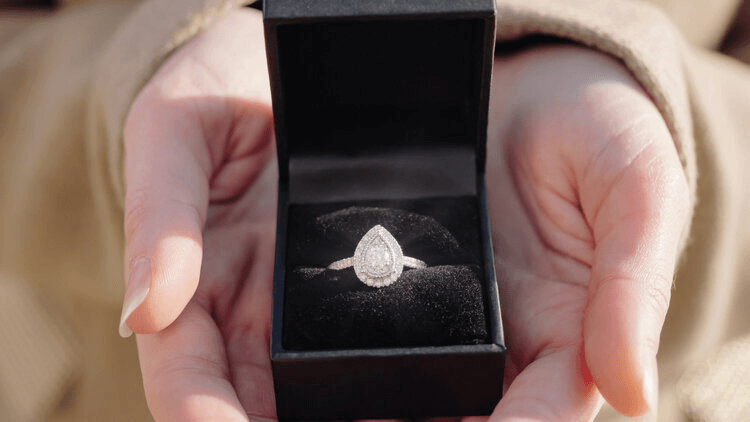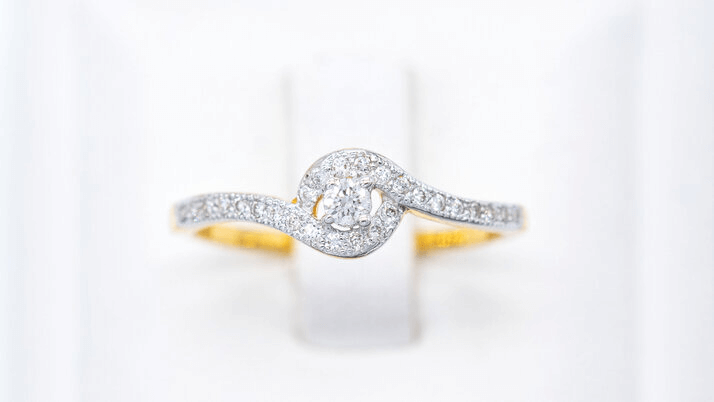The Secret of Invisible setting engagement ring

By Gary A.

Edited by Olivia H.
Published Aug 8, 2024
Edited on Mar 31, 2025
Explore the allure and complexities of invisible setting engagement rings, from their ability to enhance the diamond’s prominence by minimizing visible metalwork to practical considerations about maintenance and durability involved in choosing such a distinctive style.

Navigate This Guide:
- 4 Quick Tips for Finding Your Dream Invisible Setting
- Unveiling the Enigma: Invisible Setting Engagement Rings
- Invisible Setting in the Spotlight: Why It’s Unique
- Pros and Cons: A Balanced View
- Maintenance and Care: Preserving the Magic
- Is Invisible Setting Right for You?
- Our Expert Take
- 10 Frequently Asked Questions about Invisible Setting Engagement Rings
Before we dive deeper into the specifics, here are some practical tips to help guide your decision-making process:
4 Quick Tips for Finding Your Dream Invisible Setting
- Tip 1. Quality of Workmanship:
- Craftsmanship is Key: Invisible settings require a high level of skill. Ensure that the jeweler or brand you’re purchasing from has a reputation for quality craftsmanship.
- Examine the Setting: The diamonds should sit flush against each other without any gaps. Any misalignment can indicate poor workmanship and might lead to problems down the line.
- Tip 2. Durability and Security of the Setting:
- Check the Grooves: The diamonds in an invisible setting are held in place by grooves cut into their girdles. These grooves should be precisely cut to ensure the diamond’s security.
- Ask About Maintenance: Invisible settings can be more challenging to repair than other settings. It’s essential to know upfront what kind of maintenance might be required and whether the jeweler offers these services.
- Tip 3. Resizing and Future Adjustments:
- Understand Resizing Limitations: Invisible settings can be particularly tricky to resize without disrupting the alignment of the diamonds. Before purchasing, ask the jeweler about resizing options and potential limitations.
- Tip 4. Diamond Quality:
- Inspect the Diamonds: Even though the setting is a significant factor, the quality of the diamonds shouldn’t be overlooked. Ensure they are free of visible inclusions, especially since they’re set closely together.
- Certification Matters: Always ask for a certification from a reputable gemological lab to verify the diamond’s quality.
Now that you’ve got these practical tips, use Jeweler AI below to find the perfect engagement ring that suits your style and budget:
Unveiling the Enigma: Invisible Setting Engagement Rings
Where do you go simple or extravagant, sophisticated or blingy, there’s no getting around the fact that an engagement ring comprises two parts: a diamond and the ring. You can’t get a diamond on her finger without that bit of metal work, and you probably can’t get much of an enthusiastic yes out of her without that diamond.
But what if you could? We’re not talking about doing away with the diamond but the metal work. If you want the entire spotlight to be on the diamond, without any other distractions or details that draw away from it, how far can you go?
That depends on what you’re willing to sacrifice, but we can tell you exactly where to start: with invisible setting engagement rings.
The Genesis of Invisible Setting
Back in the day – and by that, we mean the Victorian and Edwardian eras, when fine jewelry really started to come into its own – it was all about the ornate, the complex, the extravagant, and the gregarious. Art nouveau and Gothic styles both inspired designers, fashion moguls, and jewellers to cram as many details and extras into a piece as they could. Decadence was the name of the game, not only because it flaunted wealth but because it displayed quite how sophisticated the wearer’s tastes were.
Over the years, it’s not like we fell out of love with detailed design, but that we made space for a new love: simplicity and minimalism. No more did jewelry have to be complex and heavy with detail in order to seem beautiful. Instead, we could have an appreciation for form and basic elements and their intrinsic beauty.
This is where we really started to lean into invisible settings and simpler designs. With diamond-cutting methods advancing beyond our busiest daydreams, the need to showcase the diamond without any distractions grew ever stronger. And, as the solitaire became the leading choice for engagement rings, we all grew a little more open to the idea of stripped-back, basic design in the name of showcasing the star of the show.
The Artistry Behind the Illusion
The simplest designs are often the most complex. A diamond is a very, very valuable object, not just financially but sentimentally. Entrusting a diamond to any ring design can be daunting at first, particularly if that design comprises only the most basic elements. Floating diamond engagement rings, for instance, create the illusion of absolutely no metal work at all. What little metal work there is has to be very strong, and very capable of keeping a diamond safe for decades.
As a result, only the most skilled jewellers will ever attempt to tackle invisible settings.
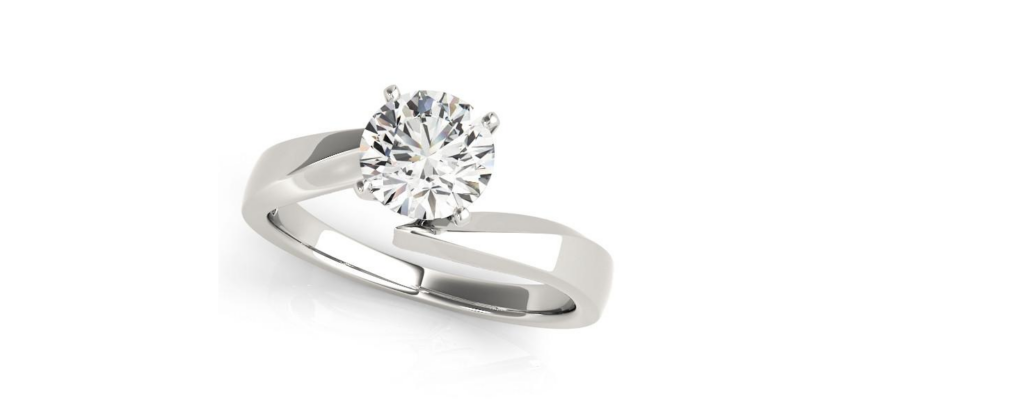
Invisible Setting in the Spotlight: Why It’s Unique
Imagine looking at someone’s ring finger and seeing only an exquisite, beautifully cut diamond. Even as he leans in closer, the structural elements are barely visible. For all intents and purposes, it’s just a beautiful diamond floating there, as if by magic.
It’s a compelling thought, but also a daunting one. You don’t see many invisible settings out in the wild – naturally, of course!
The Illusion of Size and Splendor
One of the main draws of an invisible setting is its ability to make a diamond appear as big as possible. Without any metal work masking the edges of the stone – not even prongs – there’s no chance of the diamond appearing to be shrunk by its own setting.
For contrast, consider the bezel setting. A bezel is a thin strip of metal that runs all the way around the perimeter of a diamond. It holds the diamond from all sides at once, covering the girdle and, as a result, making the diamond appear slightly smaller than it really is. For those who love the look of a bezel, this loss of size is insignificant enough that they’re not too worried about it, but it can be a deal breaker for those of us who want to make a big impact with a big-looking diamond.
The Seamless Harmony of Diamonds
While diamonds coordinate beautifully with metals of all different colors, from classic yellow gold to stark, bright platinum, some people simply prefer the look of a diamond unhindered by any other elements. You can’t avoid metal entirely, but you can make it disappear into the background To create the appearance of a seamless transition between diamond and skin.
Pros and Cons: A Balanced View
No engagement ring style is without its downsides – but there may just be enough benefits to the invisible setting to make it worth your while…
The Allure of Invisible Setting
Again, the obvious benefits to an invisible setting are that the diamond appears bigger, more light is able to reach the diamond which means more fire and brilliance can be generated through the crown and table, and the design is much more unique than some of the other styles we’re used to seeing in jewelry store windows.
Considerations and Cautions
As always, there are drawbacks to picking this particular setting style. An invisible setting is nowhere near as secure as a bulkier setting. Even a solitaire, with just four prongs at the diamond’s perimeter, offers a lot more security. Of course, a well-made ring is always a lot stronger than it looks. Metal doesn’t move in a hurry, particularly if you choose a strong metal like platinum or 14K gold.
An invisible setting also means that the diamond will be more prominent, and, as a result, more prone to getting caught on sleeves, the linings of handbags, bedding… Anything and everything. Eventually, the wearer will get used to having that diamond on their finger and won’t get themselves into so many knocks and scrapes, but it can be quite a long learning curve when the diamond is prominent on the finger.
Finally, an invisible setting inevitably means that you miss out on all the details and extra flourish is that a more detailed setting allows for. Engraving, accent stones, metal work, and other features are fun to choose from, and they offer a lot more scope in terms of creating a unique and personal ring.
Maintenance and Care: Preserving the Magic
As with any engagement ring, maintenance will be key. You will want to soak the ring regularly in mild, warm soapy water to ensure that any dust or grime isn’t building up in the crevices of the ring. While the setting is designed to be invisible, it’s still there, which means it’s still getting exposed to all the daily pollutants life brings.
Routine Check-ups for Longevity
You’ll also want to take your ring to a jeweller to get it checked over every so often – probably every six months or so. This is important whatever ring design you choose, but, when it comes to an invisible setting, it’s all the more important. The diamond won’t be as secure, so you’ll want to make sure all those hidden elements that keep it in place aren’t working themselves loose without you knowing.
Is Invisible Setting Right for You?
We won’t dance around the subject: invisible engagement rings aren’t for everyone. While they’re incredible to look at – and they definitely attract plenty of attention – they’re not very practical, and the added benefits of light exposure are minimal.
Lifestyle and Preferences: A Personal Decision
Invisible engagement rings are much stronger than they look, so your diamond won’t be as precarious as it may appear to be. Even so, some people just can’t get used to walking around with a diamond seemingly balanced on top of their finger.
What’s more, most of us love the metalwork an engagement ring features. Even if we prefer to keep things on the simple side, the band and prongs are a core part of what makes an engagement ring, an engagement ring.
Our Expert Take
There’s nothing wrong with wanting to strip things back to basics and focus on your diamond. Remember that it’s possible to showcase that stone without resorting to an invisible setting – but, if you’re prepared to feeling like you’re always living life slightly on the edge, don’t let us steer you away from a beautiful and unique choice.
10 Frequently Asked Questions about Invisible Setting Engagement Rings
- Q: What is an Invisible Setting in an Engagement Ring?
- A: An invisible setting is a unique style where diamonds are set so close together that the metal holding them is not visible, creating the illusion of a seamless surface of diamonds.
- Q: Can Invisible Set Diamonds Fall Out?
- A: Yes, diamonds in an invisible setting can fall out if the setting is damaged or if the ring undergoes a significant impact. It’s crucial to have the ring regularly inspected by a professional jeweler.
- Q: Are Invisible Setting Rings More Expensive?
- A: Invisible setting rings can be more expensive due to the complexity of the setting process and the craftsmanship required to precisely cut and set the diamonds.
- Q: Can Invisible Set Rings Be Resized?
- A: Resizing invisible set rings is more challenging than resizing rings with other settings. It’s possible but requires a skilled jeweler familiar with invisible settings to avoid damaging the structure that holds the diamonds.
- Q: How Do I Clean My Invisible Set Engagement Ring?
- A: To clean an invisible set engagement ring, gently use warm soapy water and a soft brush. Avoid harsh chemicals and vigorous scrubbing that could loosen the diamonds.
- Q: Is an Invisible Setting a Good Choice for an Active Lifestyle?
- A: Due to the delicate nature of invisible settings, they might not be the best choice for someone with a highly active lifestyle or a job that involves manual labor.
- Q: How Do Jewelers Repair Invisible Set Rings?
- A: Jewelers repair invisible set rings by carefully re-setting any loose or fallen diamonds and ensuring the hidden framework that holds the stones is intact and secure.
- Q: Will the Diamonds in an Invisible Setting Sparkle as Much as in Other Settings?
- A: While invisible set diamonds create a stunning visual effect, the sparkle might be slightly subdued compared to more open settings like prongs, as less light can enter and exit the diamonds.
- Q: How Can I Ensure the Quality of an Invisible Setting?
- A: Choose a reputable jeweler with experience in invisible settings, and inspect the ring for evenness and tightness of the diamond setting. Also, consider requesting a certification for the diamonds.
- Q: What Types of Diamonds are Used in Invisible Settings?
- A: Typically, square-shaped diamonds such as princess or baguette cuts are used in invisible settings because their straight edges allow for a seamless appearance.
Transform your proposal with Jeweler AI‘s magic. Find your perfect invisible setting ring now!
FOLLOW-UP GUIDE SERIES





